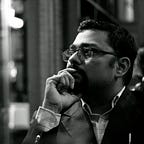Intricate Threads of Identity: Unraveling Symbols, Rituals, and Stories
Weaving the Tapestry of Humanity: The Universal Language of Symbols, Rituals, and Narratives
In the midst of the bustling streets of Tokyo, a young man proudly dons a family emblem on his suit lapel — a tradition that extends back through countless generations. Across the Pacific, in a sunlit plaza in Mexico City, families gather to celebrate the Day of the Dead, a ritual that intertwines the present with the ancestral past. In the heart of Africa, an elder under the vast expanse of the night sky narrates tales of ancient heroes, weaving the community’s identity into the very fabric of the cosmos.
These scenes, seemingly disparate, are bound by a profound trinity: symbols, rituals, and stories.
Symbols: Anchors of Collective Memory
Tokyo’s young man isn’t an anomaly. The samurai, the ancient warriors of Japan, wore mon or family crests. This symbol was — and for many, still is — an emblem of identity, signifying lineage, honor, and duty. Similarly, in the West, family coats of arms have historically played a similar role, connecting individuals to their ancestral legacy.
And who can miss the ubiquitous symbols we all recognize? The crucifix for Christians, the Star of David for Jews, or the crescent moon for Muslims, each symbol, laden with centuries of meaning, offers a shared sense of belonging and belief.
Rituals: The Dance of Time-Honored Traditions
In Mexico, the Day of the Dead isn’t just a colorful festival. It’s a ritual — a bridge connecting the living with the departed. Families create altars adorned with marigolds, photographs, and favorite foods of their loved ones, embracing the cyclical nature of existence.
Thousands of miles away, the Maasai community in East Africa celebrates the rite of passage for young men with elaborate ceremonies. The ritual signifies the transition from boyhood to warrior status, solidifying their place within the communal structure.
Stories: Chronicles of the Human Spirit
In the shadows of the Saharan dunes, griots—traditional West African historians and storytellers—have for centuries passed down oral histories. They recount tales of kings, wars, and lessons from yesteryears, ensuring that the legacy of generations remains vibrant in the communal psyche.
Meanwhile, in the libraries of Europe, ancient epics like Beowulf or the Iliad serve a similar purpose. These narratives, steeped in heroism and morality, shape cultural perceptions, defining virtues, vices, and societal norms.
Conclusion:
From Tokyo’s bustling streets to Africa’s vast savannahs, the triad of symbols, rituals, and stories paints the vibrant mosaic of human identity. While their manifestations differ across cultures, their essence remains universal. They are the anchors grounding us to our past, the threads weaving our collective narrative, and the compass guiding our communal future.
